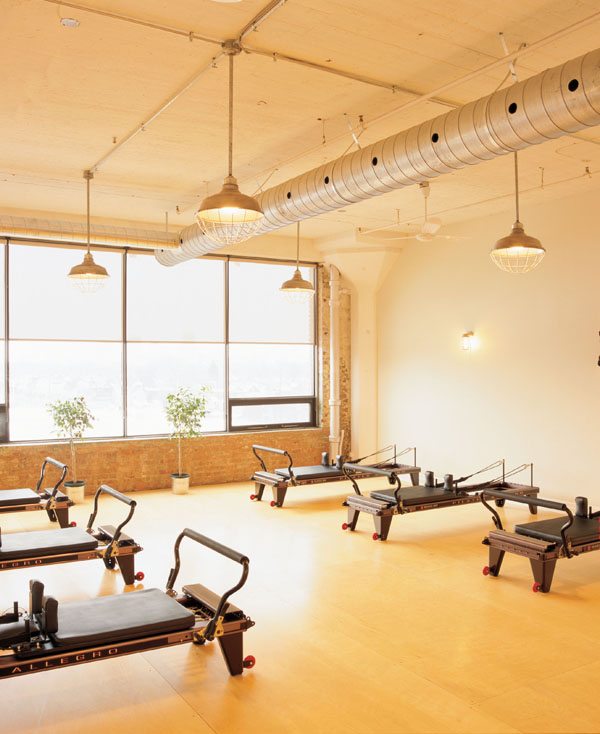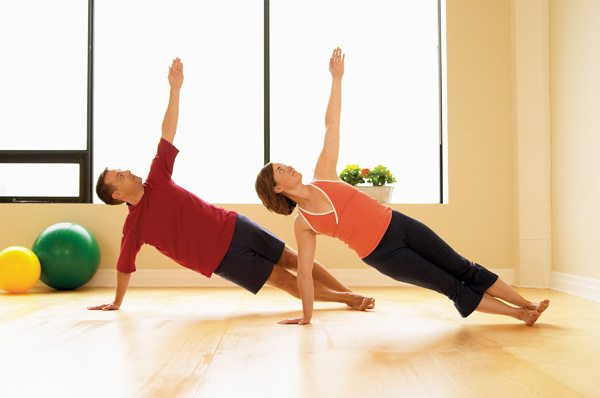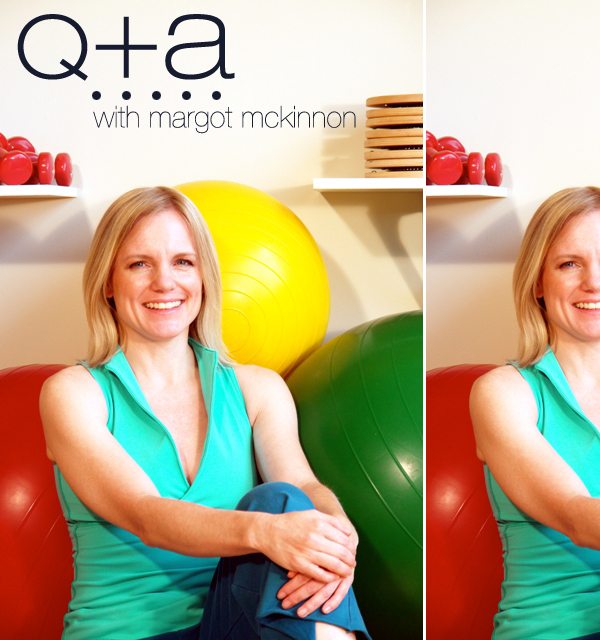Interview with Margot McKinnon of Body Harmonics
Last Edited: June 24, 2016
Author: Gloria Chik
I recently sat down with Margot McKinnon, owner and founder of Body Harmonics Pilates, perhaps the most well-known and respected Pilates training studio in Toronto. With two studios in the city, anyone with a keen interest in Pilates, from beginner to instructor, can visit Body Harmonics for multi-faceted, comprehensive classes from teachers who not only know the history of the practice, but the meaning behind each movement – which is more important than one may think. Taking some classes myself, I can attest that BH doesn’t offer the toned down practice you may get from your local gym. This is Pilates training at its core.
How do you define Pilates?
The easiest way to define it is as a system of conditioning that has its roots in a rehabilitative context that has evolved to high-end performance. You see football and hockey players, ballet dancers and all kinds of people who use their bodies for their work incorporating Pilates as part of their cross training. It runs a really broad continuum.
What do you try to accomplish with your classes?
When a class or a session is built, it’s more about making sure all the neurological connections are on than trying to make someone strong and flexible. What you’re looking for at the end of the day is someone whose gait pattern is optimal, whose walking pattern is optimal. That in-turn translates to more strength and more flexibility.
Can you see the difference between someone who practices Pilates and someone who does not?
You can totally see the difference and it’s really remarkable how quickly it can happen. Take for instance someone who’s got very rounded shoulders. In 3 or 4 exercises, if you pick them properly and put them in the right order, you can see their back open up, straighten up, their shoulders go back, their head go back. It’s not going to stick right away, but cumulatively it will. I wouldn’t exercise any other way.
What kind of person does Pilates?
I would say there are certainly people who gravitate to it more but the application of it is for everybody because it’s based on how the body works and how to make it work best. There are different categories of people it appeals to: there are people who are in pain, then there are people who want a different way of exercising. They want something that’s gentle on their joints, that ‘s going to make them strong and toned. A lot of women like it because it’s strength training that doesn’t create muscles that are bulked up.
What about men?
We have more and more men coming and it’s interesting because not very many men do it. 10 – 20% is the maximum you’d see. It’s interesting because Pilates’ founder, Joseph Pilates was a man who was a real taskmaster.
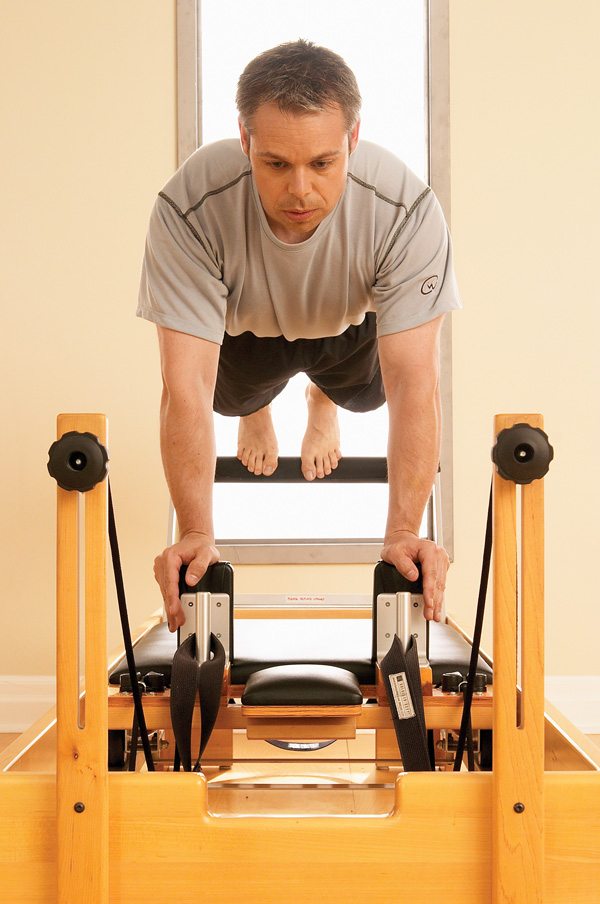
Do they think it’ll be easier than it is?
A lot of them are very surprised by how hard it is and that’s good. I’m not sure how it’s come to be perceived as something for women. I think maybe because dancers started doing it and the movements look very graceful. You watch a Pilates video and there’s no guy pumping iron, so it doesn’t appeal. I actually love seeing men once they’re into it. It’s really quite amazing.
How would you compare Pilates to yoga?
A lot of the roots of Pilates are built in yoga and I think there’s a continuum of what would be considered mind-body exercises. The original purposes of yoga and Pilates are different but if both are instructed well, you’re teaching people to move with integrity, not just “pump up, get strong, get flexible, have a good sweat”. It’s more like, “can you move in all directions?” “Can you balance on one leg?” “Can you incorporate breathing?” “Can you focus on what you’re doing?” So I think it would seem quite different to people who do yoga because the focus is different, but when you get right down to it, movement–wise and what’s happening on a physical level, you can say they’re quite similar.
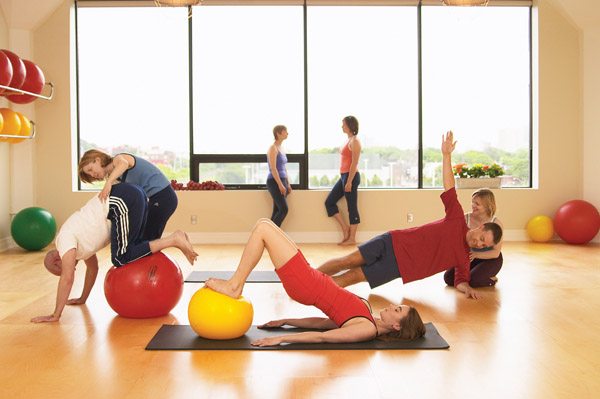
Are there different forms of Pilates or just one foundation that you work from?
Good question because everything is called Pilates but there are two main streams. We fall into the stream that is often called the evolved version that is expanding the original repertoire –breaking it apart, and figuring out how to use it with all kinds of different people. Then there’s the other stream that’s more classical. This form adheres more to the traditional exercises devised back in the 20’s. There’s benefit to both but it comes down to what your philosophy is, who you want to reach, and how you want to help people.
What’s the difference between the Pilates done here and classical Pilates?
Classical Pilates are done in a strict order and there’s no standing work. It’s on the mat and it’s done exactly the same way every time. There’s benefit to that but we know that to make a body work really well you have to do different things. We want people upright, strong spine, on their legs. That’s why we fall into the other stream.
How do you compare reformer classes to the mat?
People tend to think that the reformer is harder because it’s a machine and there’s resistance but the mat is actually more challenging because you can’t cheat and there’s nothing assisting you. The way I describe it to people sometimes is, with the reformer, you’re able to isolate movements better because the machine helps. You put your feet in the straps and all of a sudden you’re able to make a much bigger circle than you could by yourself. On the mat, you have to hold yourself and then see what your range of motion is. So the difference really is that the reformer is resistance based and strength training, but assists with movement. The mat is you and the mat. It’s strength training and you can’t cheat.
How do you feel about celebrities like Madonna touting Pilates? Do you fell like they’re turning it into just a trend?
I’m not so affected by it but think that probably it’s a good thing because more people will hear about it. The only draw back is celebrities that do it and look fantastic, have an awful lot of help to look fantastic and the average person is not going to look like Madonna from doing Pilates.
Do you offer certification programs at Body Harmonics?
Yes. I get people who are changing careers, who are already Pilates teachers, physio therapists, athletic therapists, kinesiologists, massage therapists who are all looking to incorporate an active component in their work. At BH, it’s not just about learning Pilates. It’s more about learning the body and how movement works. I’m really proud of that because it’s really what we’ve always tried to do.
Body Harmonics offers one of the most robust training programs in Canada and is probably the biggest studio in Toronto in terms of variety and number of classes. For more about Body Harmonics or to book one of their 100 weekly classes that range from Abs, Hips, and Thighs, Core Essentials, Teen Reformer, “Starving Artist” and Prenatal Reformer, visit www.bodyharmonics.com.
